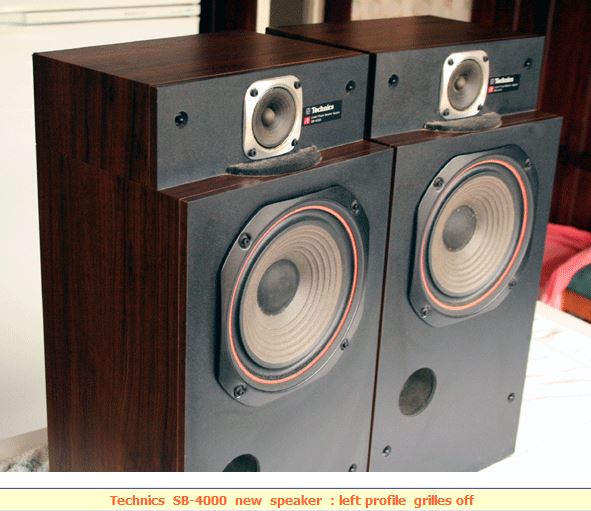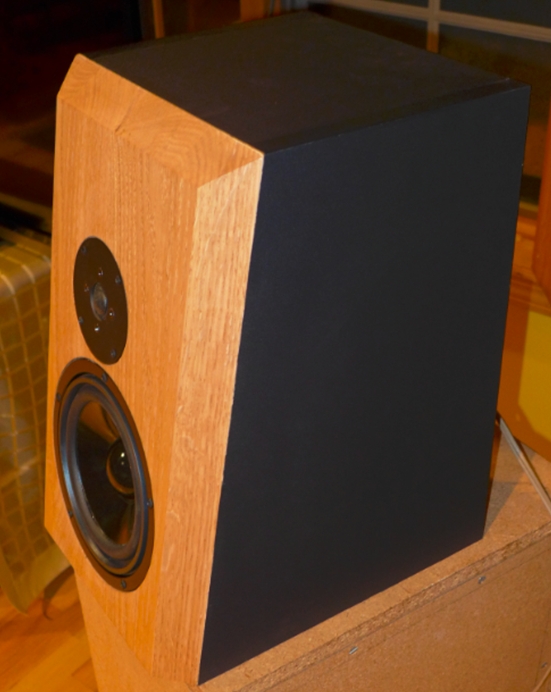Hello frinds, Another project, what is the best way of physically time aligning a tweeter. Does it need a baffle or is it best without one (a very narrow one) Then about the step towards the woofer - does it need to be straight or angled.
Thanks in advance
August
Thanks in advance
August
I've always admired a separate box for the T. The you can align it any way that sounds best. Push it back, pull it forward, at an angle, pointing straight up...
Would playing a square wave and using a mic and oscilloscope, and shifting the tweeter backwards and forwards be a good way to set it up? Unfortunately I don't have an oscilloscope, but perhaps I could record it and stick it on audacity and stretch it out. I don't know how much distortion I'd get from a DAC and amp though.
I use smaart for measurements, i thinks its accurate. Only I dont understand if the tweeter needs a baffle
I think the Digilent "WaveForms" application supports a soundcard input. WaveForms - Digilent Reference
Tweeter doesnt necessarily need a baffle, depending on where you're crossing over. My "tweeters" cross at 250 Hz and their baffle is 24" X 24". Cross at 2.5k, the baffle gets much smaller - maybe the size of the tweeter itself.
Tweeter doesnt necessarily need a baffle, depending on where you're crossing over. My "tweeters" cross at 250 Hz and their baffle is 24" X 24". Cross at 2.5k, the baffle gets much smaller - maybe the size of the tweeter itself.
Good news is you can be +/- 1/4 wavelength of crossover (acoustic centers) to be in, but I suspect exact is best.
Jon Danley mentioned lining centers up in microseconds (less than an inch).
Maybe wrap the tweeter in foam to lower diffraction from cabinet edges, certainly helped my morel solstice speaker.
I'm a 6db fan and need to dig into 12db time alignment.
But i do know that with no inductor on a b102 (10") and a single cap on a morel cat378, the tweet was at least 2" behind what would be the front baffle to sound best.
When the tweet was up against the front baffle, i couldn't discern what was the right phase. I slid it back then the percussion sounded "sharper". When i reversed the phase, i could hear a null, so i knew it was properly lined up (the not null, lol).
Djk (r.i.p.) said he had a demonstration at a stereo store he worked at (80's?).
You had 2 drivers hanging and you could move them and perceive a slight unfocussing when out of alignment.
In the end, people usually prefered louder / dynamic / room filling sound.
Most would come in with a prefered speaker that they were loosely seeking anyway.
Jon Danley mentioned lining centers up in microseconds (less than an inch).
Maybe wrap the tweeter in foam to lower diffraction from cabinet edges, certainly helped my morel solstice speaker.
I'm a 6db fan and need to dig into 12db time alignment.
But i do know that with no inductor on a b102 (10") and a single cap on a morel cat378, the tweet was at least 2" behind what would be the front baffle to sound best.
When the tweet was up against the front baffle, i couldn't discern what was the right phase. I slid it back then the percussion sounded "sharper". When i reversed the phase, i could hear a null, so i knew it was properly lined up (the not null, lol).
Djk (r.i.p.) said he had a demonstration at a stereo store he worked at (80's?).
You had 2 drivers hanging and you could move them and perceive a slight unfocussing when out of alignment.
In the end, people usually prefered louder / dynamic / room filling sound.
Most would come in with a prefered speaker that they were loosely seeking anyway.
Last edited:
Hello frinds, Another project, what is the best way of physically time aligning a tweeter. Does it need a baffle or is it best without one (a very narrow one) Then about the step towards the woofer - does it need to be straight or angled.
Thanks in advance
August
Do you know how far you need to move it? And out of curiosity, how did you determine it?
Mike
People usually use sloped baffles or stepped baffles.
You then account for it in your sim with some knowledge of the offset or acoustic centre of the drivers that is relevant:


Hope that helps.
You then account for it in your sim with some knowledge of the offset or acoustic centre of the drivers that is relevant:
Hope that helps.
You can run a log sweep and then lock the acoustic offset of the woofer. Then move the tweeter backwards until they align. Best to measure at listening distance.
Leaving a sharp 90 degree edge below the tweeter (have seen it on several commercial time aligned speakers, first ones Steve showed above also have this defect) in my tests produced a ripple in the tweeter response, very likely a diffraction issue. Sloping that helps a lot.
Leaving a sharp 90 degree edge below the tweeter (have seen it on several commercial time aligned speakers, first ones Steve showed above also have this defect) in my tests produced a ripple in the tweeter response, very likely a diffraction issue. Sloping that helps a lot.
Last edited:
I usually start with ground plane measurements using a test baffle for the bass/mid (on a 2 way system) and place the tweeter on some foam just to the side, varying the tweeter height in relation to the LF baffle and checking pulse response. That gives me my absolute phase relationship without the crossover and thats what I plug into the sim.
Depending on cabinet construction goals, listening height, crossover slopes, etc, I can the tweek the acoustic center if needed. I always try to align the drivers acoustic centers regardless because I believe it provides the best end result in terms of pusle response and off axis linearity, especially with shallow filter slopes.
Depending on cabinet construction goals, listening height, crossover slopes, etc, I can the tweek the acoustic center if needed. I always try to align the drivers acoustic centers regardless because I believe it provides the best end result in terms of pusle response and off axis linearity, especially with shallow filter slopes.
FYI/FWIW from Altec back 50-60 yrs ago, though just a [then] more current update from a 1935 Shearer woofer-tweeter horn phasing experiment:
How To Build Speaker Enclosures By Alexix Badmaieff & Don Davis : Free Download, Borrow, and Streaming : Internet Archive
http://www.soundpractices.com/images/phase.pdf
How To Build Speaker Enclosures By Alexix Badmaieff & Don Davis : Free Download, Borrow, and Streaming : Internet Archive
http://www.soundpractices.com/images/phase.pdf
Wire woofer and tweeter together with tweeter in reverse polarity with 1st order crossover on each driver near planned crossover points. Gradually move tweeter back to find highest measured amplitude response through crossover region - this is solid phase tracking.. Have measured phase data.. Sim crossover to desired results while maintaining good phase tracking..
makes sense on the sloped baffle.
I do see a bit of foam where the technique's tweeter is (post 12).
I do see a bit of foam where the technique's tweeter is (post 12).
Last edited:
system 7, help !!!!!!!!!!
what am i looking at with the technics sb4000's ?
2.5k crossover
tiny 6db woof inductor (basically hf rolloff?)
12db on tweet (out of phase).
They going for acoustic 24db ?
or could it pass a square wave ?
What's going on with the crossover ?
Technics SB-4000
what am i looking at with the technics sb4000's ?
2.5k crossover
tiny 6db woof inductor (basically hf rolloff?)
12db on tweet (out of phase).
They going for acoustic 24db ?
or could it pass a square wave ?
What's going on with the crossover ?
Technics SB-4000
Wire woofer and tweeter together with tweeter in reverse polarity with 1st order crossover on each driver near planned crossover points. Gradually move tweeter back to find highest measured amplitude response through crossover region - this is solid phase tracking.. Have measured phase data.. Sim crossover to desired results while maintaining good phase tracking..
This -
Probably the simplest and most effective way to accomplish this without test equipment.
- Home
- Loudspeakers
- Multi-Way
- Time aligning tweeter